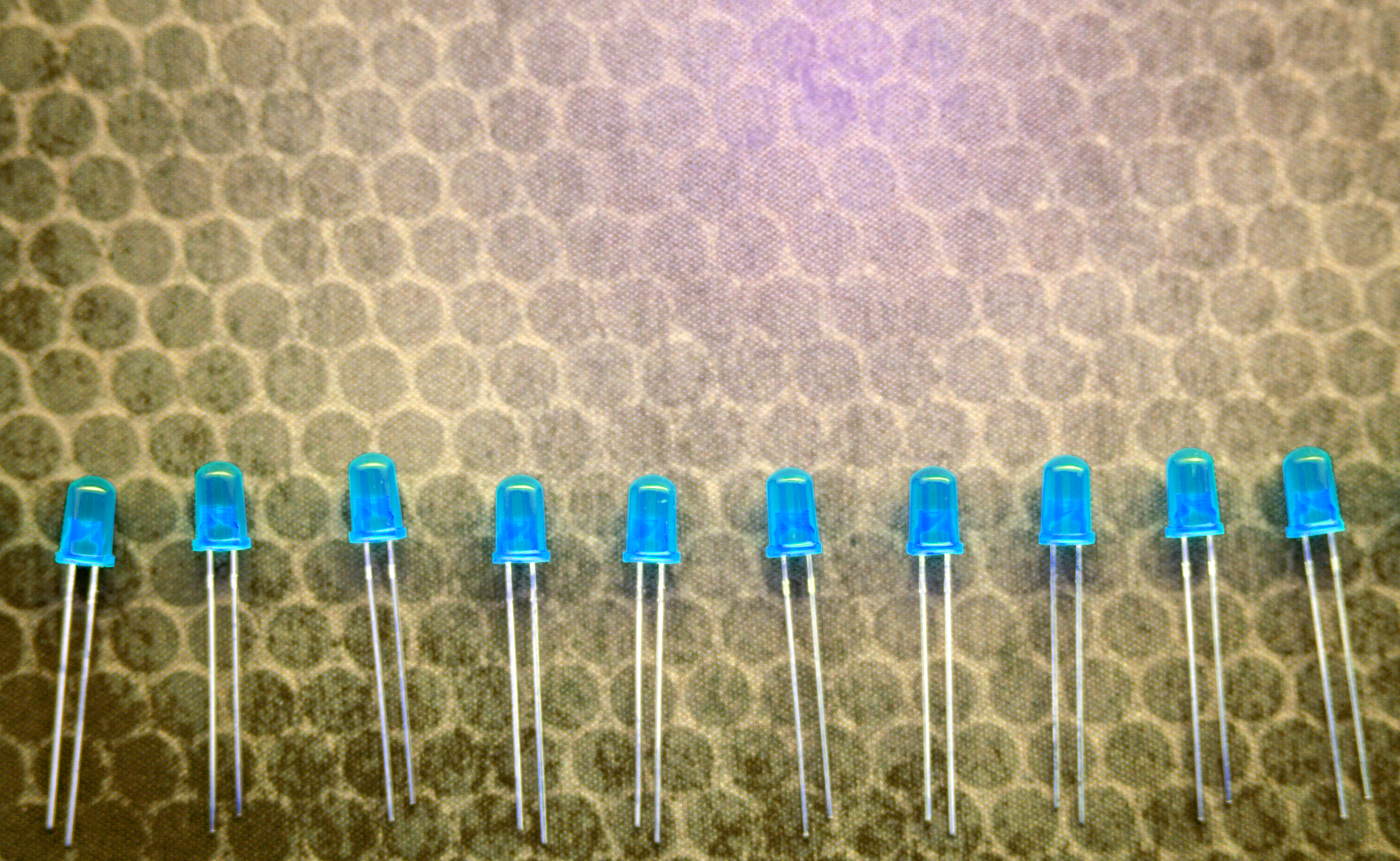In a world perpetually in pursuit of sustainability and innovation, a trio of Japanese scientists brought forth a revolution in the field of lighting that would forever change the way we illuminate our homes, streets, and cities. This groundbreaking advancement was the invention of the blue light-emitting diode (LED), a technology that not only promised an extraordinary leap in energy efficiency but also paved the way for LED lighting to become a dominant, eco-friendly lighting source worldwide. Their pioneering work not only earned them the highest accolades but also spotlighted Japan’s leading role in green technology and sustainable solutions.
Blue Light Breakthrough by Japanese Scientists
The quest for blue light emission in diodes was long considered the "holy grail" of semiconductor technology, eluding researchers for decades. Japanese scientists Isamu Akasaki, Hiroshi Amano, and Shuji Nakamura achieved what many thought impossible, creating the first efficient blue LEDs in the early 1990s. This breakthrough was not just a scientific achievement but a key to unlocking the potential of LED lighting, enabling a spectrum of colors, including the elusive white light. Their work signified a monumental shift in lighting technology, promising energy-efficient, durable, and environmentally friendly lighting solutions.
Nobel Prize Awarded for LED Innovation
In recognition of their monumental contribution to science and technology, the 2014 Nobel Prize in Physics was awarded to Akasaki, Amano, and Nakamura. The Nobel Committee highlighted the blue LED as an invention of the greatest benefit to humankind, acknowledging its role in creating energy-saving and environmentally friendly light sources. The award underlined the global impact of their innovation, celebrating their pioneering work that led to the development of LED lighting, now ubiquitous across the globe.
The Journey to a Brighter, Bluish World
The discovery of blue LEDs marked the beginning of a new era in lighting. Before their invention, LED technology was limited to colors such as red and green, making the creation of white light, necessary for everyday lighting, impossible. The blue LED was the missing piece, allowing for the combination of red, green, and blue LEDs to produce white light. This advancement led to the development of more efficient, durable, and longer-lasting light sources, significantly reducing the world’s energy consumption and contributing to environmental conservation.
How Blue LEDs Changed Lighting Forever
The invention of blue LEDs has transformed the lighting industry, paving the way for the development of LED bulbs that are vastly superior to traditional incandescent and fluorescent bulbs. LEDs consume significantly less energy, are more cost-effective in the long run, and have a much longer lifespan, reducing the need for frequent replacements. This shift towards LED lighting has had profound implications for energy consumption worldwide, with LEDs now playing a crucial role in global efforts to reduce greenhouse gas emissions and combat climate change.
The Science Behind Blue LED Technology
The blue LED is a marvel of modern semiconductor technology, utilizing materials such as gallium nitride to achieve blue light emission. The scientists faced significant challenges, including the development of high-quality gallium nitride crystals and the creation of a p-n junction, a critical component of LED technology. Their success was built on years of persistent research and experimentation, overcoming technical obstacles that had thwarted many before them. This technological leap forward laid the groundwork for the efficient, high-brightness LEDs we rely on today.
The Trio Behind the Illuminating Discovery
Isamu Akasaki, Hiroshi Amano, and Shuji Nakamura, the visionary scientists behind the blue LED, each brought unique skills and determination to their collaborative efforts. Akasaki and Amano worked together at Nagoya University in Japan, while Nakamura conducted his groundbreaking work at Nichia Corporation, a small company in Tokushima. Their combined efforts, driven by relentless curiosity and innovation, led to the creation of a technology that would illuminate the world in ways previously unimagined.
Blue LEDs: From Labs to Living Rooms
From their inception in the laboratory, blue LEDs rapidly transitioned into practical applications, revolutionizing the way we light our homes and public spaces. LED lighting is now found everywhere, from the screens of smartphones and televisions to streetlights and architectural lighting. This technology has made lighting more versatile, customizable, and efficient, significantly reducing the environmental footprint of lighting and making sustainable lighting solutions accessible to a global audience.
Energy Efficiency and the Blue LED Revolution
The blue LED revolution has been instrumental in advancing energy efficiency across the globe. LED lights use up to 85% less energy than incandescent bulbs and can last up to 25 times longer. This dramatic increase in efficiency has led to substantial reductions in energy consumption and costs for consumers and industries alike. The widespread adoption of LED lighting is a cornerstone of global efforts to conserve energy resources and mitigate the effects of climate change, emphasizing the critical role of innovation in achieving sustainability goals.
The Global Impact of Blue Light Innovation
The invention of the blue LED has had a transformative effect on industries worldwide, spurring advancements in technology, design, and sustainability. Beyond lighting, blue LEDs are crucial in sterilization processes, medical devices, and electronic displays, showcasing the versatility of this technology. The global shift towards LED lighting is reducing electrical consumption and greenhouse gas emissions, contributing to a more sustainable and energy-efficient future. The impact of this innovation extends beyond practical applications, highlighting the importance of scientific research in addressing global challenges.
Future Horizons: Beyond Blue LED Lighting
As we look to the future, the potential applications of blue LED technology and its successors continue to expand. Researchers are exploring ways to make LEDs even more efficient, longer-lasting, and more environmentally friendly. Innovations such as organic LEDs (OLEDs) and quantum dot LEDs (QLEDs) are set to further revolutionize lighting and display technologies. The ongoing evolution of LED technology promises not only brighter and more colorful lighting solutions but also more sustainable ways to meet the world’s growing energy needs.
Japan’s Contribution to Eco-Friendly Lighting
Japan’s pivotal role in the development of blue LED technology underscores the country’s commitment to innovation and sustainability. Japanese scientists and companies continue to lead in the field of semiconductor research, pushing the boundaries of what’s possible in eco-friendly lighting and technology. This dedication to green technology not only highlights Japan’s contributions to global environmental efforts but also sets a precedent for future scientific advancements and their potential to effect positive change worldwide.
Celebrating the Pioneers of Blue LED Technology
The story of blue LED technology is a testament to the power of perseverance, collaboration, and innovation. As we celebrate the achievements of Akasaki, Amano, and Nakamura, we also recognize the broader implications of their work for global sustainability and technological progress. Their legacy illuminates the path for future generations of scientists and innovators, inspiring continued exploration and discovery in the quest for a brighter, more sustainable world.
The invention of blue LED technology by a visionary trio of Japanese scientists has reshaped the landscape of lighting and set the stage for a more energy-efficient, sustainable future. Their contributions extend far beyond the realm of lighting, influencing industries, environmental efforts, and the daily lives of people around the globe. As we look ahead, the continuing evolution of LED technology promises not only to brighten our world but also to lead us towards a more sustainable, eco-friendly future, honoring the legacy of the pioneers who illuminated the path forward.








